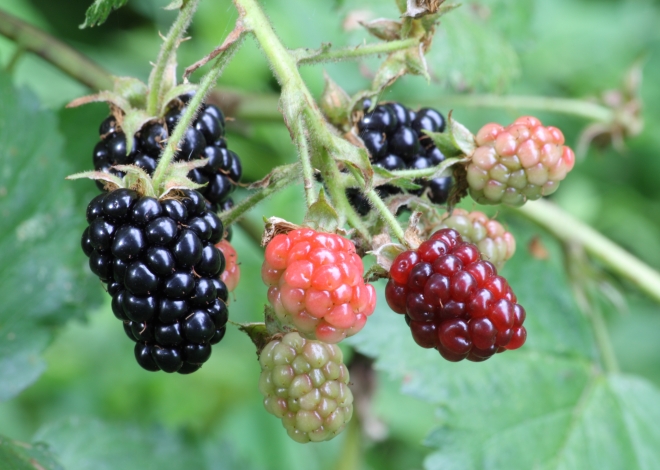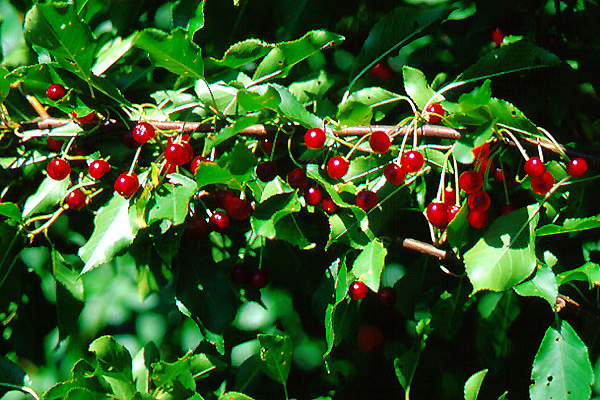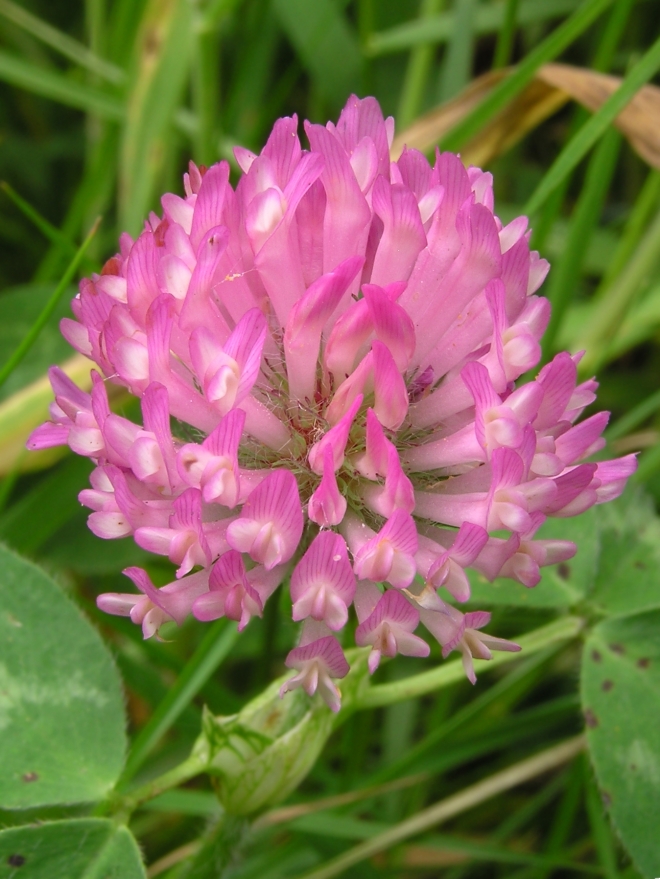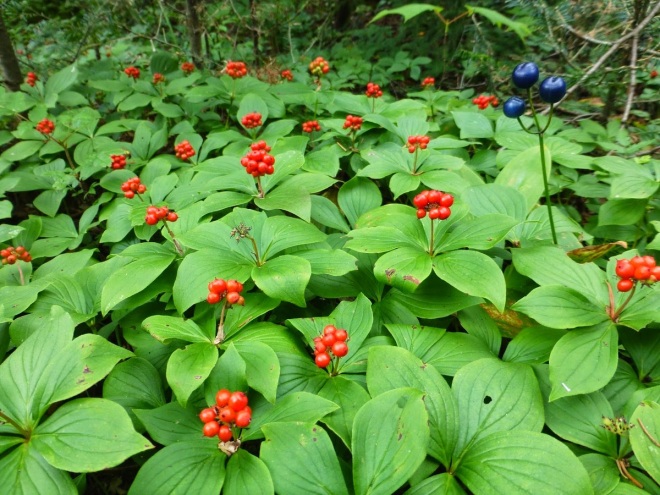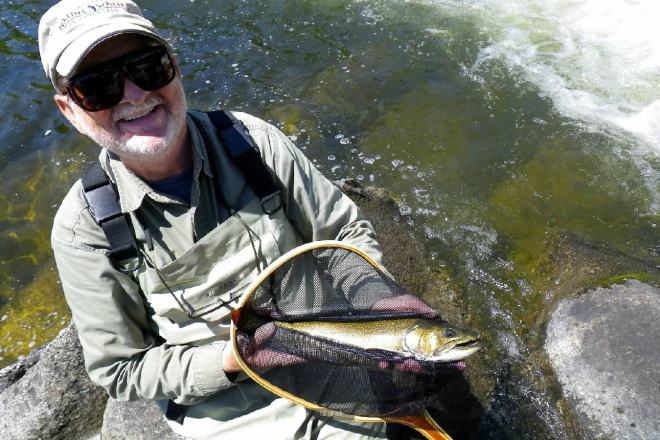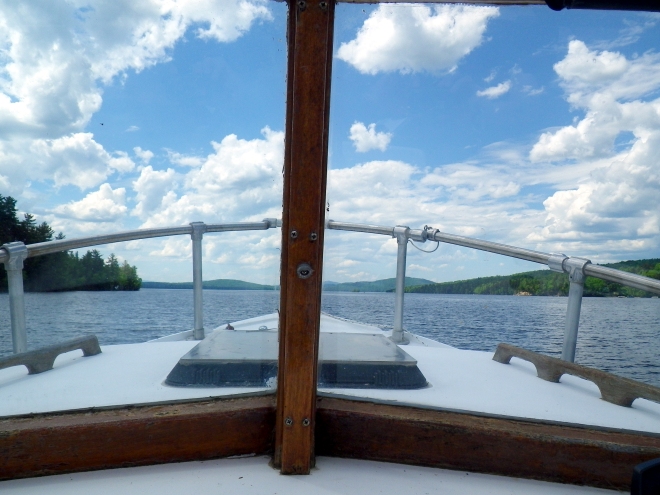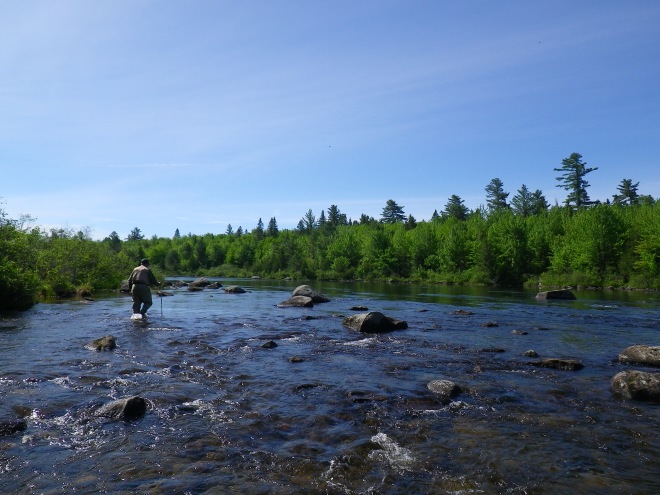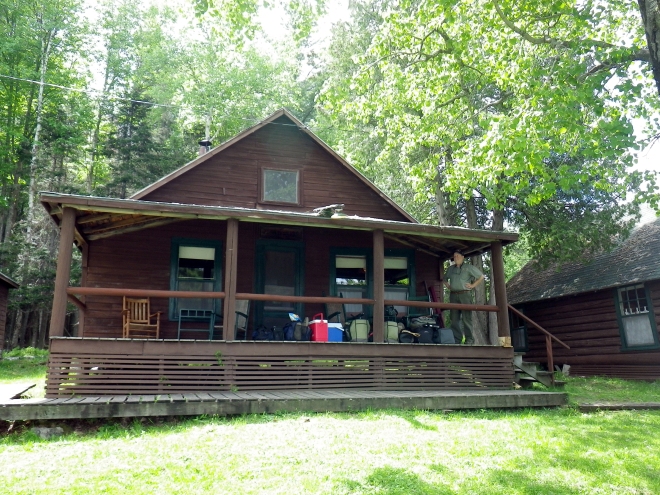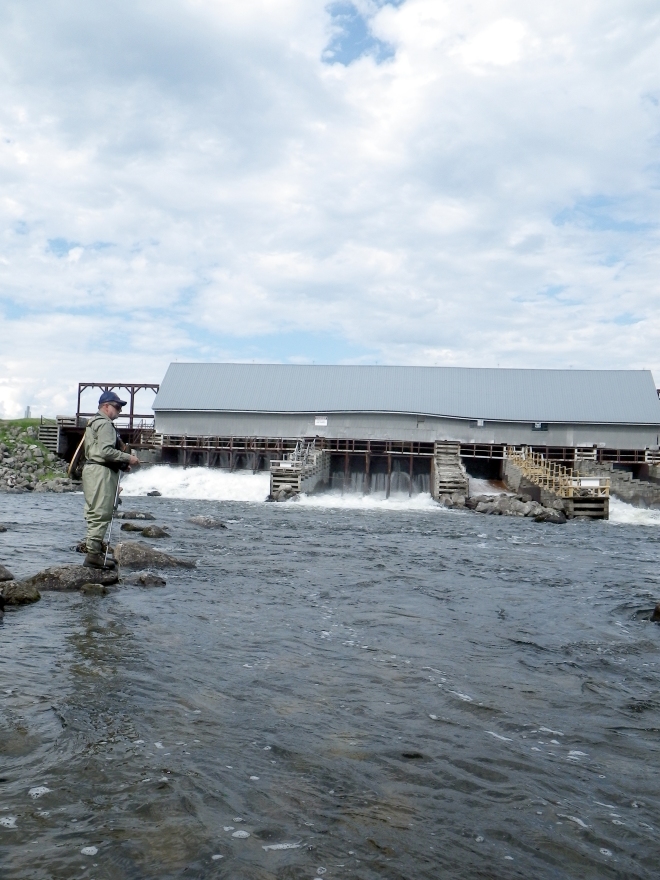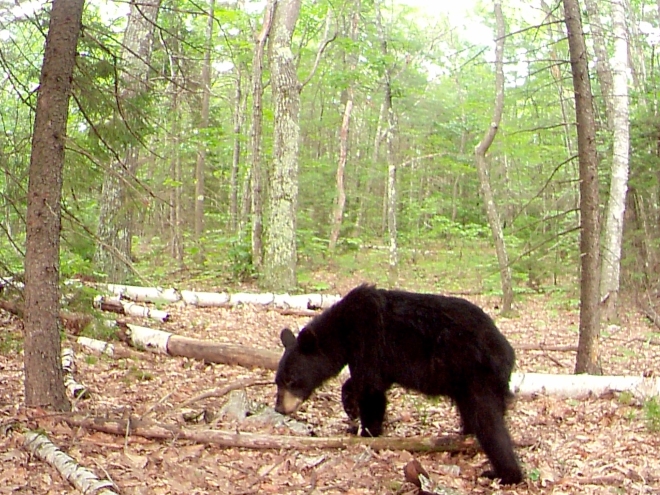I started by checking out Faxxon this morning. My first stop was an apple tree hidden in the towering white pines. I found it several years ago when tracking a buck in the snow. It was loaded with apples then, but I haven’t seen that repeated in the last, now three years. There were no apples in it, nor more than a handful in any of the next dozen or more that I checked.
I proceeded down the trail, and I wasn’t surprised to see deer trails coming through the ferns heading toward the field.
One was so well used that I had to mark it, and I found a great spot for an early season tree stand.
Then I proceeded down to the logging road, and again I wasn’t disappointed–lots of track, and as always, one very big set of tracks.
The blackberries that have southern exposure have ripe fruit, so I added them to my breakfast menu.
I then skirted the field to check out the apple trees there. As I turned the corner to the first tree I came face to beak, if you will, with a hen turkey and her nine poults.
They were only 30 feet from me. I froze, and the hen slowly moved to gather and move her young, several of which had been dusting themselves under the tree, which had a good crop of red apples. She led them into the field. I paralleled them, but didn’t want to push them into full flight. I saw one more tree with apples, but did not check out others there for fear off driving the turkeys towards the road. This was obviously her second clutch. All of them were only about two-thirds the size that you would expect for this time of year. The biggest were only slightly larger than a big rooster. As I went back to the truck, I came across pin cherry bushes that were loaded with ripe fruit.
I then went to the field where we sled. The most noticeable thing was the red clover throughout the field.
There was much deer sign, mostly trails leading out of the cover and into the field. Again four beautiful apple trees and not a half-dozen apples between them. I then went up top where some of the trees along the edge of the road had a few apples.
My assessment overall from this one day, and what I have observed at J.E. and along the roadside, is that this is going to be a terrible apple year and a good year for almost every other kind of fruit. The acorns look good, but it is too yearly to call the shot, as the big drops will come in just about a month.
Beechnuts are the next big question, and we are about two weeks from getting our answer.
Bear season opens in less than 8 days, and archery season for deer and turkey is just 15 days later.
WLAGS


